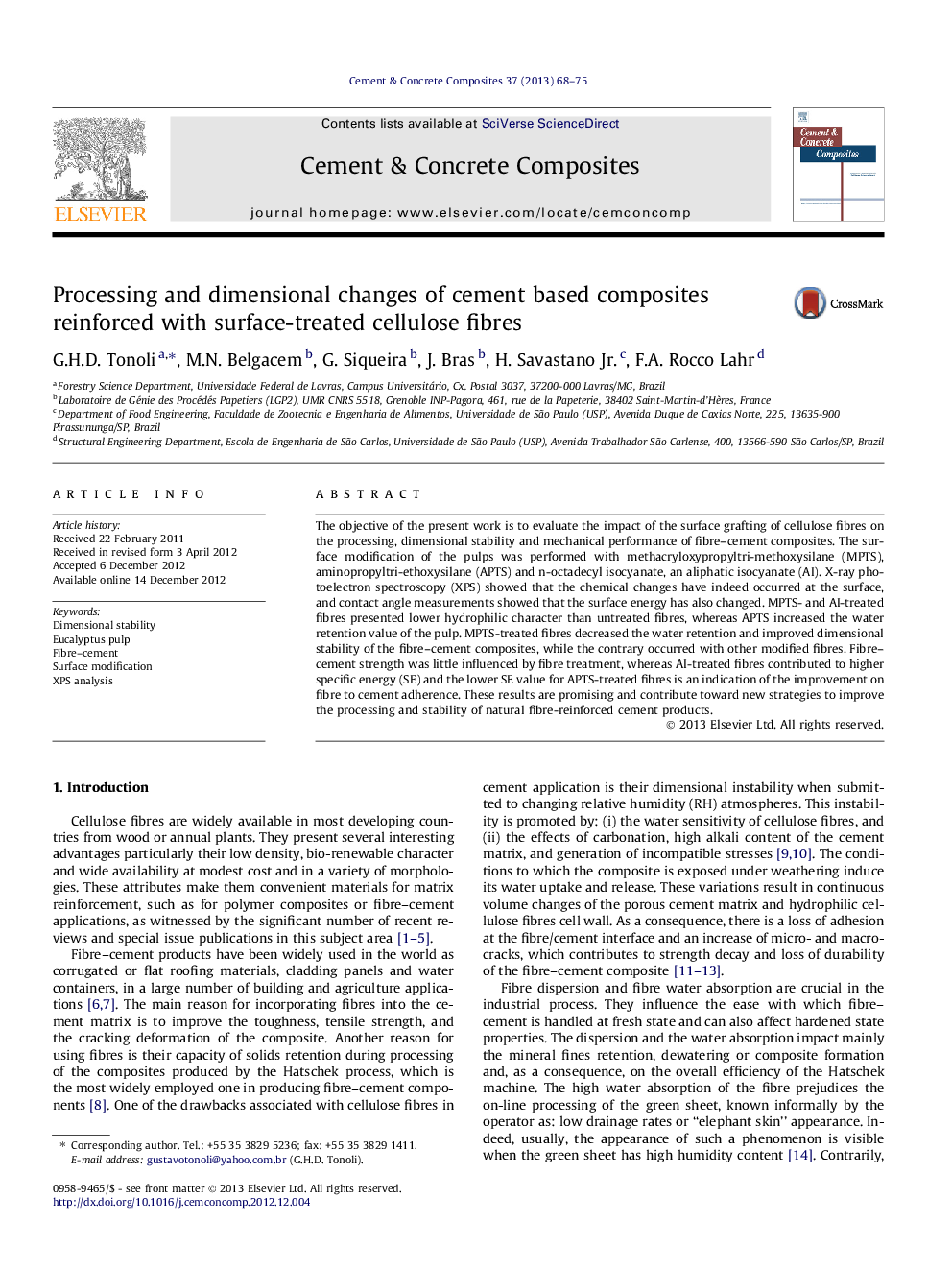| Article ID | Journal | Published Year | Pages | File Type |
|---|---|---|---|---|
| 1454994 | Cement and Concrete Composites | 2013 | 8 Pages |
The objective of the present work is to evaluate the impact of the surface grafting of cellulose fibres on the processing, dimensional stability and mechanical performance of fibre–cement composites. The surface modification of the pulps was performed with methacryloxypropyltri-methoxysilane (MPTS), aminopropyltri-ethoxysilane (APTS) and n-octadecyl isocyanate, an aliphatic isocyanate (AI). X-ray photoelectron spectroscopy (XPS) showed that the chemical changes have indeed occurred at the surface, and contact angle measurements showed that the surface energy has also changed. MPTS- and AI-treated fibres presented lower hydrophilic character than untreated fibres, whereas APTS increased the water retention value of the pulp. MPTS-treated fibres decreased the water retention and improved dimensional stability of the fibre–cement composites, while the contrary occurred with other modified fibres. Fibre–cement strength was little influenced by fibre treatment, whereas AI-treated fibres contributed to higher specific energy (SE) and the lower SE value for APTS-treated fibres is an indication of the improvement on fibre to cement adherence. These results are promising and contribute toward new strategies to improve the processing and stability of natural fibre-reinforced cement products.
